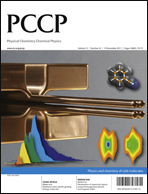Theoretical description of adiabatic laser alignment and mixed-field orientation: the need for a non-adiabatic model
Abstract
We present a theoretical study of recent laser-alignment and mixed-field-orientation experiments of asymmetric top molecules. In these experiments, pendular states were created using linearly polarized strong ac electric fields from pulsed lasers in combination with weak electrostatic fields. We compare the outcome of our calculations with experimental results obtained for the prototypical large molecule

- This article is part of the themed collection: Physics and chemistry of cold molecules

 Please wait while we load your content...
Please wait while we load your content...